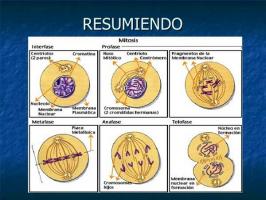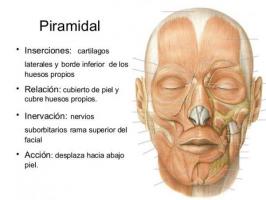+50 examples of PROTOZOOS with FEATURES and VIDEOS

The protozoa are simple microscopic organisms that represent a first evolutionary step among eukaryotic beings. Many of these organisms are known and widely studied to be parasites that produce diseases of greater or lesser severity in humans and other animals, and others are simply of Free life. In this article from a TEACHER we will give some examples of protozoa and what are its characteristics. If you want to know more about them, keep reading us!
Protozoa, also called protozoa, are microscopic organisms that normally they live in humid and aquatic environments. In some systems of classification of organisms, protozoa are considered a kingdom of their own, the kingdom Protozoa, while in others they are grouped within the so-called Protista kingdom. In any case, they are considered a first evolutionary step within eukaryotic organisms, prior to the appearance of higher organisms: animals, plants, fungi or algae.
Traditionally, protozoa are classified as unicellular primitive animals. In fact the name of protozoa comes from the Greek words
protos 'first and zoo 'animal'. In addition, like other animals they are heterotrophic organisms (they feed on organic matter) and with a voluntary movement. As we saw in the previous paragraph, there is currently some debate about its correct scientific classification.The size of most protozoan animals varies between 10 and 50 micrometers. and they can be observed with a microscope. Over 300,000 species of protozoa are known, belonging to all the links in the food chain: there are decomposers, predators, herbivores and parasites. Many of these parasites have the ability to infect humans and cause disease.

Image: Calameo
Although the group of protozoan organisms is tremendously diverse, it is possible to mention some features common. These are:
- Possession of own mobility: they move through flagella (the majority), cilia or the emission of protrusions from their cytoplasms, called pseudopods.
- They are single-celled organisms: the entire body of the animal is made up of a single cell. This cell is eukaryotic and has the general structure of a eukaryotic cell, with diverse organelles and structures, specialized in the different functions of an organism: nutritional functions, mobility, production of energies, etc.
- Microscopic size and variable shapes: most protozoa are between 10 and 50 micrometers long, although some species can reach one millimeter or more. Their shapes are very varied, with amorphous shapes in the amoebas, oval shapes in the paramecium and more elongated shapes. Even within the same protozoan, there are different forms throughout its life cycle.

Image: Animals
Traditionally, protozoa are classified into four phyla or four types of protozoa. They are as follows.
Rhizopods
One of the examples of protozoa are the rhizopods, which are characterized by the fact that they form a projections of their cytoplasm and plasma membrane that are projecting towards the site to which they want to advance, called pseudopodia.
But these projections not only serve them to move, but they also serve to capture food, introduce it into the cytoplasm and digest them through a process called phagocytosis, either by predation of other organisms or by digesting organic material from waste. Rhizopods are popularly known as amoebas. Some important species are:
- Entamoeba coli: it is the most important species of amoeba. Human parasite, causing gastrointestinal symptoms known as amebiasis.
- Iodamoeba buetschlii: lives at the expense of human beings, without causing harm
- Endolimax nana: lives at the expense of human beings, without causing harm
Flagellated
Flagellate organisms are another example of protozoa. They are characterized by moving by means of tails with which they are propelled forward by the environment. Some very important species for humans are:
- Trichomonas vaginalis: cause of an important disease in humans known as trichomoniasis. Symptoms occur mainly in women, with men being rather carriers.
- Naegleria fowleri: it is a protozoan known colloquially as brain-eating amoeba (it is halfway with amoebas) and inhabits lakes, lagoons, pools or hot springs. It can enter humans through inhalation, causing a very serious disease called primary amebic meningoencephalitis. There are very few cases a year worldwide, but almost always fatal.
- Giardia lamblia: causing a fecal-oral disease called giardiasis. It produces gastrointestinal symptoms and poor absorption, but the most common is that it is asymptomatic.
- Trypanosoma cruzi: causes a disease known as Chagas disease, mainly in South America. It is transmitted by kissing bed bugs.
- Trypanosoma brucei: causing sleeping sickness in Africa. It is transmitted by mosquitoes and is a very serious disease.
- Leishmania spp.: causing leishmaniasis in humans and mainly in dogs. It is transmitted by the bite of a mosquito.
Ciliates
It is characterized by its displacement by cilia present in the plasma membrane, which are similar to flagella but smaller and more numerous. Some important ciliates are:
- Baladintium coli: cause of a fecal-oral disease very similar to amoebiasis, called balantidiasis.
- Paramecium spp.: they are well-known protozoa that inhabit fresh waters such as ponds. They do not parasitize the human being.
Sporozoa
We finish the examples of protozoa with these parasitic and important protozoa of the human being without much mobility. Some relevant ones are:
- Plasmodium spp: one of the most fundamental species of protozoa in the world, as they cause the parasitic disease that produces the most deaths per year, malaria. It is transmitted by a mosquito.
- Toxoplasma gondii: causing toxoplasmosis. It is transmitted by contact with cats, but more frequently through vegetables. Generally, it is an asymptomatic disease, except in immunosuppressed and pregnant women, where it must be controlled because it can be transmitted to the fetus and be very serious.



